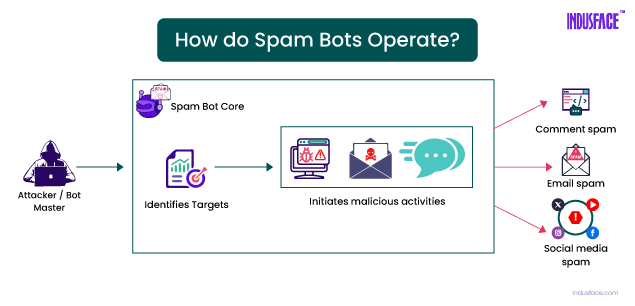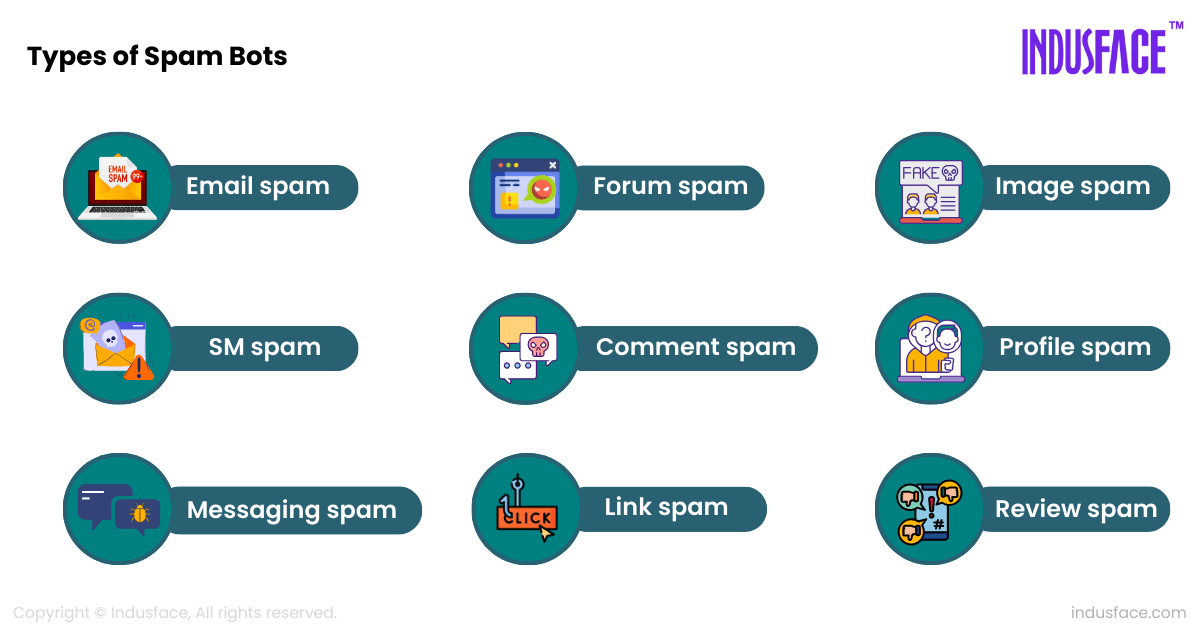Introduction to Spam Bots
Spam bots, short for “spam robots” or “spamming robots,” are automated programs or scripts designed to perform repetitive tasks on the internet, typically for malicious or deceptive purposes.
These bots are programmed to carry out various activities such as sending unsolicited bulk messages, posting irrelevant or promotional content, generating fake interactions (e.g., likes, shares, comments), and spreading malware or phishing links.
How Do Spam Bots Operate?

Spam bots operate by first identifying potential targets across various online platforms such as email, social media, and websites. They then utilize automated scripts and bots to carry out tasks at scale, employing deceptive tactics to appear legitimate.
These bots generate and distribute spam content, including advertisements, scams, and phishing links, propagating them widely through targeted channels. To evade detection and maximize effectiveness, spam bots continually adapt their tactics, monitoring performance metrics and optimizing strategies accordingly.
Types of Spam Bots
Here are the most widely used spam bots:

- Email Spam Bots: These bots send out large volumes of unsolicited emails, often promoting products, services, or phishing attempts.
- Social Media Spam Bots: These bots create fake accounts or automate actions such as posting spammy content, liking, following, or sharing to spread spam across social media platforms.
- Comment Spam Bots: These bots post irrelevant or promotional comments on blogs, forums, or websites, often containing links to spammy or malicious websites.
- Forum Spam Bots: Similar to comment spam bots, these bots target online forums, posting spam messages, advertisements, or links to drive traffic to specific websites.
- Chat and Messaging Spam Bots: These bots send unsolicited messages or friend requests via chat platforms, messaging apps, or social media, often promoting products, scams, or malware.
- Link Spam Bots: These bots create or distribute links to spammy or low-quality websites across various online platforms, including blogs, forums, social media, and comments sections.
- Image Spam Bots: These bots spread spam content through images, embedding links or spammy keywords in image tags, or sharing spam images on image-sharing platforms.
- Profile Spam Bots: These bots create fake profiles on social media or other online platforms, often with the intent to promote specific products, services, or deceptive schemes.
- Review Spam Bots: These bots generate fake reviews or ratings on review websites, e-commerce platforms, or app stores to manipulate reputation or rankings.
The Impact of Spam Bots on Businesses and Online Communities
Spam bots damage business reputation through fake reviews and comments, incur financial losses via click fraud and wasted advertising budgets, pose security risks with malware and phishing attacks, disrupt online operations, diminish user trust and engagement, drain resources for anti-spam measures, and present legal and regulatory challenges.
While most industries are affected by spam bots, e-commerce, social media and financial services are the most targeted.
The combination of high user engagement, financial incentives, vast data resources, trust and credibility, and global reach makes e-commerce, social media, and financial services industries prime targets for spam bot activities.
Identifying Spam Bots
Spam bots share common traits that distinguish them from genuine users online, including automation for rapid and repetitive actions, anonymity through fake identities or IP spoofing, and persistence despite detection efforts.
Spam bots operate on a large scale, generating vast amounts of spam content with malicious intent, often lacking genuine engagement or consistency in behaviour.
Despite attempts to mimic human interaction, spam bots may exhibit easy-to-spot signs such as uniform characteristics, shallow interactions, and resistance to anti-spam measures.
Bot Management Platforms’ Role in Spam Bot Protection
Advanced bot management platforms such as AppTrana WAAP, play a crucial role in protecting against spam bots by implementing various mechanisms to detect, mitigate, and prevent bot activity.
By performing behavioural analysis through advanced machine learning algorithms, these tools first identify anomalies in user behaviour and separate bots from humans.
Once the bots are identified, they deploy automated bot mitigation mechanisms such as rate-limiting, throttling, CAPTCHA and more.


